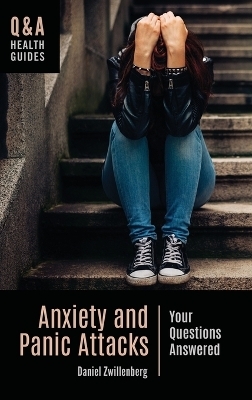
Anxiety and Panic Attacks
Greenwood Press (Verlag)
978-1-4408-5298-5 (ISBN)
How is social anxiety different from shyness or introversion? Are anxiety disorders only a problem in the Western, industrialized world, and if not, are they expressed differently in other cultures? Why do some people suffer from panic attacks while others do not? What kinds of therapy and medication are available for anxiety? What happens in therapy? How can well-meaning family and friends help a person with an anxiety disorder rather than make things worse?
Anxiety and Panic Attacks: Your Questions Answered addresses all of these topics and much more, presenting information in a question-and-answer format that makes finding the desired information easy. The book begins with a "Guide to Health Literacy" section that explains what health literacy is and provides readers with tools to improve their health literacy, and then examines five myths and misconceptions about anxiety and supplies five case studies that provide real-world context and reinforce the concepts discussed in the book. All of the Greenwood Q&A Health Guides series books are specifically designed to provide readers with authoritative yet accessible answers to their questions in a concise, targeted resource that they can trust to be medically accurate.
Daniel Zwillenberg, PsyD, is a clinical psychologist at McLean Hospital's 3East adolescent DBT program and is an instructor in psychology in the Department of Psychiatry at Harvard Medical School.
Series Foreword
Acknowledgments
Introduction
Guide to Health Literacy
Common Myths and Misconceptions about Anxiety and Panic Attacks
Questions and Answers
General Information
1. What is anxiety?
2. What purpose do fear and anxiety serve?
3. How is the experience of fear "made" by the brain?
4. How do fear and anxiety affect our physiology, subjective experience, and behavior?
5. How do fear and anxiety impact perception and cognition?
6. What is a panic attack?
7. What are the different kinds of anxiety disorders?
8. Are there other mental disorders that have anxiety as a key characteristic?
9. How common are anxiety disorders? Who tends to get them?
10. Why are women more likely than men to be diagnosed with an anxiety disorder?
Causes and Risk Factors
11. Why do some people develop anxiety disorders?
12. How does parenting affect anxiety?
13. Can anxiety be inherited?
14. How do people develop irrational fears of spiders, dogs, heights, and so on?
Signs, Symptoms, and Diagnosis
15. When does normal anxiety become a disorder?
16. How are anxiety disorders diagnosed?
17. How does anxiety cause people to "choke" under pressure?
18. How is anxiety related to depression?
19. Are there other conditions that can be confused with anxiety disorders?
20. Is homophobia an anxiety disorder?
21. Is it possible to die from a panic attack?
Treatment
22. How are anxiety disorders treated?
23. What is psychotherapy?
24. What is cognitive-behavioral therapy, and how is it applied to anxiety?
25. What kinds of medications are used? How do they work?
26. Are there treatments other than medication and psychotherapy?
27. Is it best for people to avoid the things that make them anxious?
28. What do mental health professionals recommend people to do during a panic attack?
History and Culture
29. How have the concepts of anxiety and anxiety disorders evolved over time?
30. How does culture impact anxiety?
Case Studies
Directory of Resources
Glossary
Bibliography
Index
About the Author
| Erscheinungsdatum | 11.07.2018 |
|---|---|
| Reihe/Serie | Q&A Health Guides |
| Sprache | englisch |
| Maße | 156 x 235 mm |
| Gewicht | 454 g |
| Themenwelt | Schulbuch / Wörterbuch ► Lexikon / Chroniken |
| Geisteswissenschaften ► Psychologie ► Persönlichkeitsstörungen | |
| ISBN-10 | 1-4408-5298-7 / 1440852987 |
| ISBN-13 | 978-1-4408-5298-5 / 9781440852985 |
| Zustand | Neuware |
| Haben Sie eine Frage zum Produkt? |
aus dem Bereich


